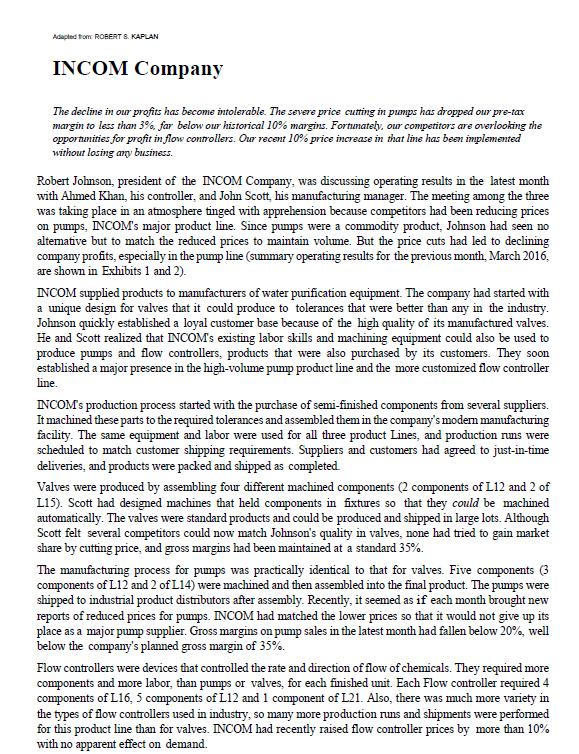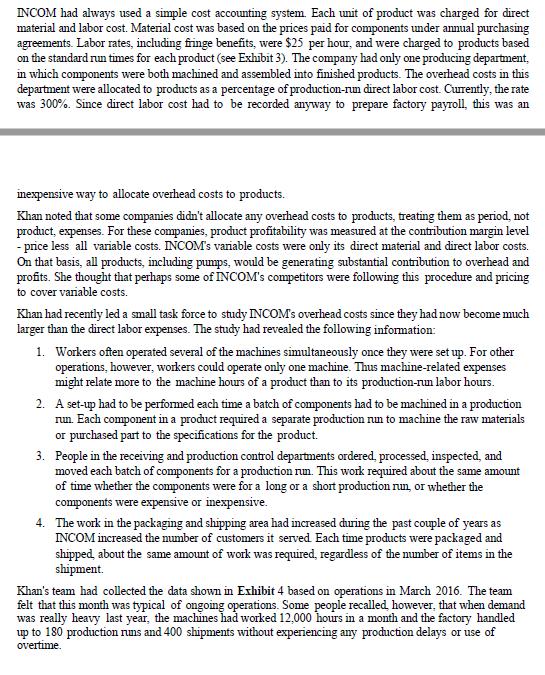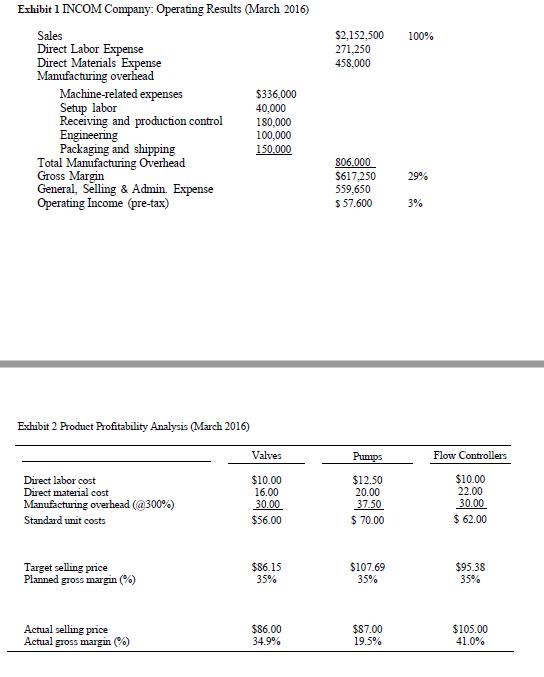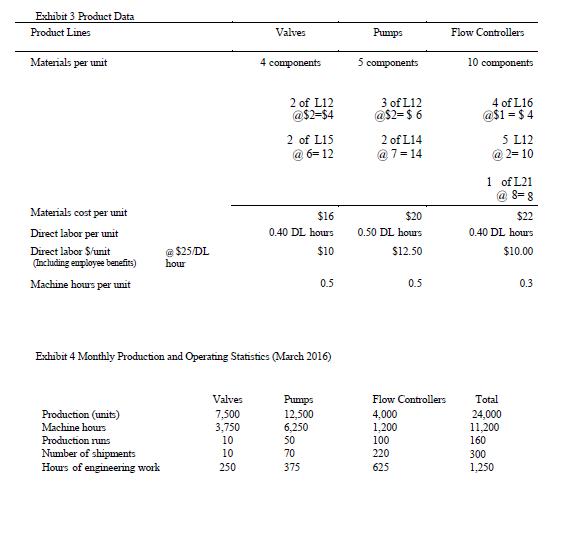Q1. Build INCOM Income Statement in the month of April 2016, if they produced 7700 Valves, 12,000 Pumps and 4,200 Flow Controllers. Show your calculations




Q1. Build INCOM Income Statement in the month of April 2016, if they produced 7700 Valves, 12,000 Pumps and 4,200 Flow Controllers. Show your calculations and assumptions.
Q2. Based on Question 1, the company needs to increase its Net operating Income Margin in April to 9.5%, which product price would you change, to what value, why?
Adapted from ROBERT 8. KAPLAN INCOM Company The decline in our profits has become intolerable. The severe price cutting in pumps has dropped our pre-tax margin to less than 3%, far below our historical 10% margins. Fortunately, our competitors are overlooking the opportunities for profit in flow controllers. Our recent 10% price increase in that line has been implemented without losing any business. Robert Johnson, president of the INCOM Company, was discussing operating results in the latest month with Ahmed Khan, his controller, and John Scott, his manufacturing manager. The meeting among the three was taking place in an atmosphere tinged with apprehension because competitors had been reducing prices on pumps, INCOM's major product line. Since pumps were a commodity product, Johnson had seen no alternative but to match the reduced prices to maintain volume. But the price cuts had led to declining company profits, especially in the pump line (summary operating results for the previous month, March 2016. are shown in Exhibits 1 and 2). INCOM supplied products to manufacturers of water purification equipment. The company had started with a unique design for valves that it could produce to tolerances that were better than any in the industry. Johnson quickly established a loyal customer base because of the high quality of its manufactured valves. He and Scott realized that INCOM's existing labor skills and machining equipment could also be used to produce pumps and flow controllers, products that were also purchased by its customers. They soon established a major presence in the high-volume pump product line and the more customized flow controller line. INCOM's production process started with the purchase of semi-finished components from several suppliers. It machined these parts to the required tolerances and assembled them in the company's modern manufacturing facility. The same equipment and labor were used for all three product Lines, and production runs were scheduled to match customer shipping requirements. Suppliers and customers had agreed to just-in-time deliveries, and products were packed and shipped as completed. Valves were produced by assembling four different machined components (2 components of L12 and 2 of L15). Scott had designed machines that held components in fixtures so that they could be machined automatically. The valves were standard products and could be produced and shipped in large lots. Although Scott felt several competitors could now match Johnson's quality in valves, none had tried to gain market share by cutting price, and gross margins had been maintained at a standard 35%. The manufacturing process for pumps was practically identical to that for valves. Five components (3 components of L12 and 2 of L14) were machined and then assembled into the final product. The pumps were shipped to industrial product distributors after assembly. Recently, it seemed as if each month brought new reports of reduced prices for pumps. INCOM had matched the lower prices so that it would not give up its place as a major pump supplier. Gross margins on pump sales in the latest month had fallen below 20%, well below the company's planned gross margin of 35%. Flow controllers were devices that controlled the rate and direction of flow of chemicals. They required more components and more labor, than pumps or valves, for each finished unit. Each Flow controller required 4 components of L16, 5 components of L12 and 1 component of L21. Also, there was much more variety in the types of flow controllers used in industry, so many more production runs and shipments were performed for this product line than for valves. INCOM had recently raised flow controller prices by more than 10% with no apparent effect on demand.
Step by Step Solution
3.47 Rating (147 Votes )
There are 3 Steps involved in it
Step: 1

See step-by-step solutions with expert insights and AI powered tools for academic success
Step: 2

Step: 3

Ace Your Homework with AI
Get the answers you need in no time with our AI-driven, step-by-step assistance
Get Started


